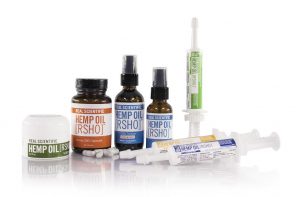Some health conditions require alternatives to using dry, oil, wax, or edible medical cannabis.
Here are four new methods for patients to absorb medical cannabis.
Cannabinoids have demonstrated tremendous potential in treating many medical conditions, ranging from epilepsy to chronic pain. The problem is that many of these conditions rely on cannabinoids passing through the blood-brain barrier, while others require rapid absorption into the bloodstream. Conventional delivery systems are not ideally suited to achieve these goals, which has prompted many companies to develop alternatives.
In this article, we will look at four alternative delivery systems for cannabinoids and why investors may want to consider the companies behind them.
1. Oral Thin Films
Listerine® PocketPack® and other breath strips have become a popular way to kill bad breath germs in less than 30 seconds. It turns out that the same type of technology could help efficiently deliver cannabinoids into the bloodstream without the use of water.
CURE Pharmaceutical Corp. (OTCQB: CURR) is developing an oral thin film technology with faster onset and greater bioavailability than tablets and other conventional delivery systems. Using a micro-encapsulation process, the active ingredients are shielded by phospholipids and liposomes to deliver higher doses with better flavor masking. These active ingredients bypass the gastric system and are rapidly absorbed into the bloodstream for maximum effectiveness.
Since they’re simply placed the tongue to dissolve, oral thin films are ideally suited for children and elderly patients that may have trouble swallowing pills. They may also help improve compliance since they don’t require water and have improved flavor masking.
2. Chewing Gum
GlaxoSmithKline’s (NYSE: GSK) Nicorette® chewing gum has become the most popular nicotine replacement therapy in the world. But surprisingly, chewing gum hasn’t been used as a delivery mechanism for many other drugs despite its convenience and benefits.
AXIM Biotechnologies Inc. (OTCQB: AXIM) is developing chewing gum-based cannabinoid therapies targeting a wide range of medical conditions. The company’s most advanced program is CanChew Plus® for the treatment of irritable bowel syndrome (“IBS”), but it has similar programs targeting multiple sclerosis / pain spasticity, Parkinson’s disease, dementia, restless leg’s syndrome, opioid addiction, tobacco smoking cessation, and other conditions.
In addition to effectively delivering cannabinoids into the blood stream, chewing gum offers a controlled release via cellulose and may improve cerebral circulation, stimulate the basal ganglia, reduce stress, improve memory, and offer neuroprotective benefits.
3. Lipid Encapsulation
The primary issue with tablets and other swallowed medicine is that they’re subject to so-called first pass metabolism. Compounding this problem, studies have shown that cannabinoids do not tolerate acidic environments like the stomach.
Lexaria Corp. (OTCQB: LXRP) is developing lipid encapsulation technologies designed to protect cannabinoids in acidic environments and maximize absorption. The company’s researchers processed a mixture of hemp oil, black tea, and select lipids to create a cannabinoid-infused tea that has resulted in as much as a 499% increase in intestinal tissue permeability for cannabidiol (“CBD”) over a concentration matched mixture of just CBD and water.
In addition to improved bioavailability, the company’s licensable technology platform has a rapid onset of just 15-20 minutes – compared to 60-120 minutes for conventional therapies – along with the elimination of undesirable tastes. The company has already signed several licensing agreements to commercialize the patented technology around the world. Lexaria is working with the Canadian federal government, through the National Research Council, on further research, development, and commercialization opportunities.
4. Sol-Gel Nasal Delivery
Soft gels have become a popular delivery mechanism since they are easy to administer, familiar to patients, and may contain a variety of different chemicals designed for slow-release and other features that improve the safety and efficacy profile of the active ingredients.
PreveCeutical Medical Inc.’s (CNSX: PREV) Sol-Gel technology encapsulates cannabinoids in a soluble form, while nanomicelles provide tissue permeation enhancing properties. Local tissue irritation is avoided as cannabinoids are in-solution and can be presented at lower doses. At the same time, Sol-Gels can remain in place for extended periods of time, which can reduce the administration times to once or twice weekly rather than daily.
The company has pioneered a novel process for preparing insoluble drug-containing nanomicelles and incorporating them into Sol-Gels in conjunction with the Parekh group at PACE-UQ. The team plans to file a provisional patent application around the single phase Sol-Gels for nasal delivery, which could vastly improve bioavailability relative to other therapeutics that are already on the market.
Looking Ahead
Cannabinoids have tremendous potential in addressing many medical conditions, but there are some unique challenges to their absorption. Fortunately, there are many companies working on improved delivery systems designed to increase bioavailability, reduce the onset time, and improve the taste profile and other convenience factors. Investors may want to take a look at these companies as potential investment opportunities in the space.
This article by Ryan Allway originally appeared on www.cannabisfn.com.










